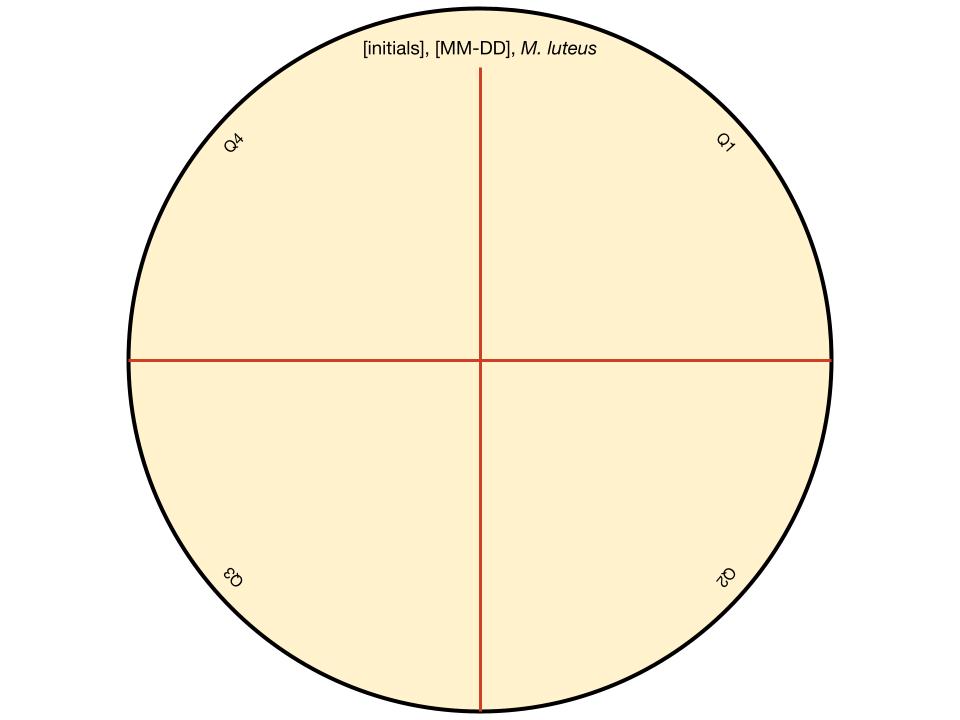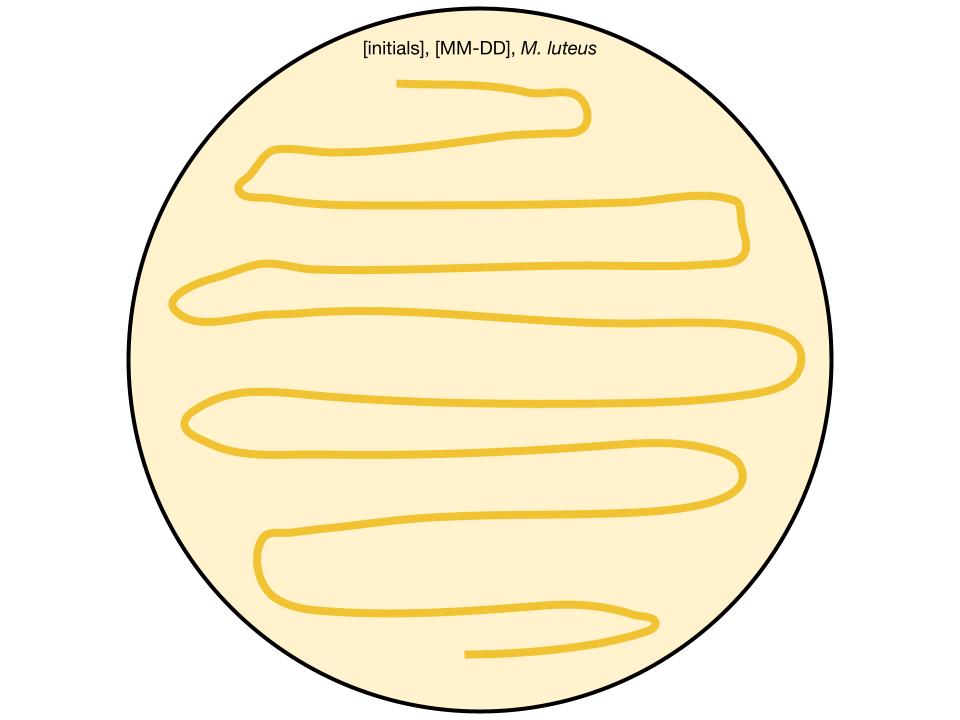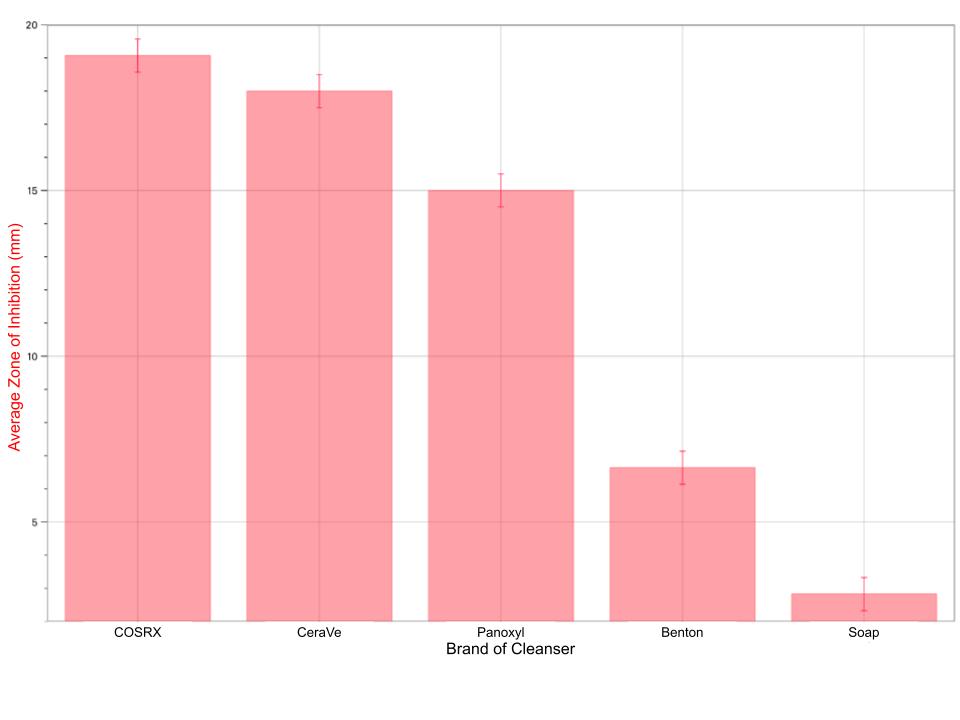Fitz Hobbs, Life Science
Abstract
With the rise in the popularity of skincare products, it can be difficult for consumers to determine what to buy and what is most effective. The purpose of this study is to compare the inhibitory action of five popular facial cleansers on the bacterium M. luteus, common to skin flora. Lawns of M. luteus were prepared and discs infused with the cleansers were placed in accordance with halo assay protocol. The cleansers each showed differently sized mean zones of inhibition, resulting in a clear hierarchy of effectiveness. Consequently, it was determined that COSRX’s cleanser showed the greatest level of inhibition, followed by CeraVe’s, Panoxyl’s, Benton’s, and then a natural soap.
Introduction
There is a global rise in the popularity of skincare and facial hygiene routines and products, stimulated largely by social media (Joshi et al. 2022). With this comes the individual promotion of a wide range of materials, from imported Korean and Japanese beauty products to staples like CeraVe and simple soaps. This experiment intends to investigate the actual antimicrobial effect of some popular brands’ products to answer the question: To what extent do different facial cleansers inhibit the growth of M. luteus as measured by the zone of inhibition in millimetres?
The five products being investigated all contain active ingredients shown to have some antimicrobial effect – however, their strengths vary. The Benton Tea Tree Cleansing Water and CeraVe Foaming Facial Cleanser both contain the essential oil of the Melaleuca alternifolia (tea tree) leaf, known to possess antibacterial properties through its constituent terpinen-4-ol, which commercial oil is often required to have a minimum percentage of (Carson et al. 2006; Hammer et al. 1996). CeraVe’s product also contains betaine salicylate, which is part of a group shown to have limited the growth of both gram-positive and gram-negative bacteria by a significant amount (Cheng et al. 2010). The COSRX Low pH Good Morning Cleanser contains phytosphingosine, which has been shown to present antibacterial properties even at very low concentrations (Pavicic et al. 2007). PanOxyl’s 4% Acne Creamy Wash contains a 4% concentration of benzoyl peroxide, a “broad-spectrum anti-bacterial agent” (Dutil 2010). The soap, made with shiso leaves, contains perillaldehyde, which has been shown to have antimicrobial properties (Wang et al. 2008).
The presence of antimicrobial active ingredients in each of these products means there is a likelihood of at least a majority showing inhibition of M. luteus, a Gram-positive bacterium with a similar structure to E. coli found commonly in skin flora (Abu-Salem & Ibrahim 2014; Davis 1996). Though generally harmless, this bacterium can help pathogens gain immune resistance, meaning it should not become too substantial (Nguyen 2019). The actual effectiveness of the cleansers being tested on a microbiome has not been investigated, and as such, this project aims to find the practical inhibitory action of the named products, with M. luteus acting as a model organism.
Materials and Methods
This experiment was performed on Micrococcus luteus (Merlan Scientific) with halo assays formed using discs infused with five different cleansers – Panoxyl 4% Acne Creamy Wash, CeraVe Foaming Facial Cleanser, COSRX Low pH Good Morning Cleanser, Benton Tea Tree Cleansing Water, and a Japanese basil soap by Beauty Secrets of Japan.
Preparing Plates
Twenty-five plates were prepared to allow for 17 in trial use and 6 spares to act as growth plates. Plates designated for trials were labelled with the variables being tested in a cross formation, as seen in Figure 1. M. luteus were plated in the growth plate using the simple streaking method shown in Figure 2.

Figure 1. Cross-formation of plates.

Figure 2. Simple streaking method.
Preparing the Lawn and Discs
A small selection of M. luteus from the growth plate was scooped onto the tip of a 20-200 𝜇l pipette and mixed vigorously into a centrifuge tube filled with 100 𝜇l distilled water. The entire 100 𝜇l bacterial solution was then pipetted onto the plate. Using an L-spreader, the solution was spread around the plate until a lawn was formed. To infuse the sterile discs, they were placed in beakers filled with some of their respective cleansers. After 5 to 8 minutes, a disc was removed from the beaker and placed in the centre of a respective quadrant until there was a disc in each quadrant, with 14 trials of each cleanser. In the “control” quadrants, uninfused sterile discs were placed. Once dry, the plates were flipped and placed in an incubator set to 25ºC.
Measuring Zones of Inhibition
The plates were removed from the incubator one week after inoculation and placed on a non-reflective surface with a ruler on top, ensuring no zone was covered. Pictures were taken of each disc from directly above. In Apple’s Preview software, a line was drawn spanning the diameter of the zone of inhibition and crossing through the centre of the disc. This line was moved onto the ruler using the software, and zones of inhibition were measured to the nearest millimetre (rounding up when necessary).

Results
Table 1. Average zone of inhibition for each brand’s product with percentage uncertainty.

Uncertainties presented in Table 1 were calculated using the following formula:


Figure 3. Bar graph showing the average zone of inhibition of each product by brand with error bars.
The results in Figure 3 show that COSRX’s Low pH Good Morning Cleanser had the largest average zone of inhibition, followed by CeraVe’s Foaming Facial Cleanser, Panoxyl’s 4% Acne Creamy Wash, Benton’s Tea Tree Cleansing Water, and finally the natural handmade soap. While the average zones of inhibition for COSRX, CeraVe, and Panoxyl are relatively close together (values of 19.07 mm, 18.00 mm, and 15.00 mm in Table 1) and there is no significant difference from one to the next, there is a large decrease between Panoxyl and Benton (by 8.36 mm to 6.64 mm). The soap, with only an average zone of inhibition of 2.83 mm, consistently had the smallest zones, often 0 mm in diameter, with some exceptions.
The percentage uncertainties of the higher values (COSRX, CeraVe, and Panoxyl) are negligible, but those of the lower values are quite significant – 7.53% uncertainty on Benton and 17.65% on the soap (Table 1).
Discussion
This study tested the effectiveness of different facial cleansers in preventing the growth of M. luteus by measuring their respective zones of inhibition. The results indicate that COSRX had the greatest measure of inhibition with a small uncertainty, meaning its phytosphingosine content likely makes for a good antibacterial ingredient in a cleanser. CeraVe, which contains tea tree oil as its main active ingredient, had the next best inhibition. However, Benton Tea Tree Cleansing Water, which also contains tea tree oil as its primary constituent, showed very little inhibitory action. It is therefore likely that the CeraVe cleanser’s other ingredients elevated the action of tea tree oil. These include betaine salicylate and a number of extracts with some antimicrobial properties, such as Oenothera biennis (evening primrose)and Nelumbo nucifera (sacred lotus) flower extracts (Huh & Kim 2014; Singh et al. 2017). These additional ingredients provide a strengthening force to promote the tea tree oil’s function and enhance its antibacterial effect. After the CeraVe product, the Panoxyl wash had a mean zone of inhibition of 15.00 mm, still indicating a significant effect. The product was less effective due to its specificity for inhibiting P. acnes, but still showed some inhibitory action due to its broad antibacterial properties. There was also a significant variance in these results, shown by the 7.53% uncertainty, which indicates inconsistent effectiveness. The handmade soap showed the lowest level of inhibition. This is due to the minimal concentration of only a weak antibacterial agent, perillaldehyde. Additionally, the uncertainty of 17.65% for the soap designates a high level of variance and little reliability in these results.
Despite the apparent conclusiveness of the results, it is difficult to determine how accurate they are, as there is no comparable precedent for this study. There is a low level of imprecision in the higher values, but it is notable with the lower values for Benton and the soap. The limited sample size (only 14 trials for each variable) and some errors in making the lawns contributed to this. The lawns were sometimes streaky and would have been better if 200 𝜇l of bacterial solution had been used instead. Despite these limitations, there is still significance to the data.
With greater time or resources, the effect of these cleansers on a greater variety of bacteria found on the skin could be explored. Bacteria like E. coli, S. epidermidis, or P. acnes are common on the skin, and while S. epidermidis is healthy, E. coli and P. acnes are less so. It would be interesting to investigate these cleansers’ inhibitory action on bacteria different from M. luteus.
Despite any limitations or restrictions, this experiment provided results which determine that COSRX’s Low pH Good Morning Cleanser shows the greatest inhibitory action of all five cleansers, making it realistically the best option. This is followed by CeraVe’s Foaming Facial Cleanser and Panoxyl’s 4% Acne Creamy Wash. The Benton Tea Tree Cleansing Water and handmade soap showed very limited inhibitory action.
References
Abu-Salem, Ferial, and Hayam Ibrahim. “Antimicrobial Activity and Phytochemicals Screening of Jojoba (Simmondsia Chinensis) Root Extracts and Latex.” International Journal of Nutrition and Food Engineering, vol. 8, no. 5, 2014. WASET, https://doi.org/10.5281/zenodo.1094407. Accessed 23 Mar. 2023.
Carson, C. F., et al. “Melaleuca Alternifolia (Tea Tree) Oil: A Review of Antimicrobial and Other Medicinal Properties.” Clinical Microbiology Reviews, vol. 19, no. 1, 2006, pp. 50-62. PubMed Central, https://doi.org/10.1128/CMR.19.1.50-62.2006.
Cheng, Gang, et al. “Integrated Antimicrobial and Nonfouling Hydrogels to Inhibit the Growth of Planktonic Bacterial Cells and Keep the Surface Clean.” Langmuir, vol. 26, no. 13, 2010, pp. 10425-28. PubMed, https://doi.org/10.1021/la101542m.
Davis, Charles Patrick. “Chapter 6.” Medical Microbiology, edited by Samuel Baron, 4th ed., University of Texas Medical Branch at Galveston, 1996, www.ncbi.nlm.nih.gov/books/NBK7617/.
Dutil, Maha. “Benzoyl Peroxide: Enhancing Antibiotic Efficacy in Acne Management.” Skin Therapy Letter, vol. 15, no. 10, 2010, pp. 5-7, pubmed.ncbi.nlm.nih.gov/21076800/.
Hammer, Katherine A., et al. “Susceptibility of Transient and Commensal Skin Flora to the Essential Oil of Melaleuca Alternifolia (tea Tree Oil).” American Journal of Infection Control, vol. 24, no. 3, 1996, pp. 186-89. PubMed, https://doi.org/10.1016/s0196-6553(96)90011-5.
Huh, Man-kyu, and Hye-jin Kim. “연잎 추출물의 구강미생물에 대한 항균 효과” [“Antibacterial effect on leaf-extract from Nelumbo nucifera against oral microorganism”]. Journal of Korean Society of Dental Hygiene, vol. 14, no. 1, 2014, pp. 117-22. KoreaScience, https://doi.org/10.13065/jksdh.2014.14.01.117. Abstract.
Joshi, M., et al. “The Impact of Social Media on Skin Care: A Narrative Review.” Lviv Clinical Bulletin, vols. 1-2, nos. 37-38, 17 June 2022, pp. 85-96. Lviv Clinical Bulletin, https://doi.org/10.25040/lkv2022.01-02.085. Accessed 23 Mar. 2023.
Nguyen, TIen. “Pathogen Recruits Good Bacteria on Skin to Initiate Infections.” c&en, vol. 96, no. 30, 19 July 2018, cen.acs.org/biological-chemistry/infectious-disease/Pathogen-recruits-bacteria-skin-initiate/96/i30. Accessed 23 Mar. 2023.
Pavicic, T., et al. “Anti-microbial and -inflammatory Activity and Efficacy of Phytosphingosine: An in Vitro and in Vivo Study Addressing Acne Vulgaris.” International Journal of Cosmetic Science, vol. 29, no. 3, 2007, pp. 181-90. Wiley Online Library, https://doi.org/10.1111/j.1467-2494.2007.00378.x.
Singh, Shilpi, et al. “Antiproliferative and Antimicrobial Efficacy of the Compounds Isolated from the Roots of Oenothera Biennis L.” Journal of Pharmacy and Pharmacology, vol. 69, no. 9, 2017, pp. 1230-43. PubMed, https://doi.org/10.1111/jphp.12753.
Wang, Chien Y., et al. “Increasing Antioxidant Activity and Reducing Decay of Blueberries by Essential Oils.” Journal of Agricultural and Food Chemistry, vol. 56, no. 10, 2008, pp. 3587-92. ACS Publications, https://doi.org/10.1021/jf7037696.